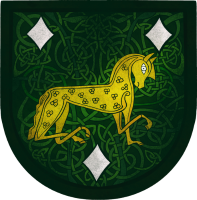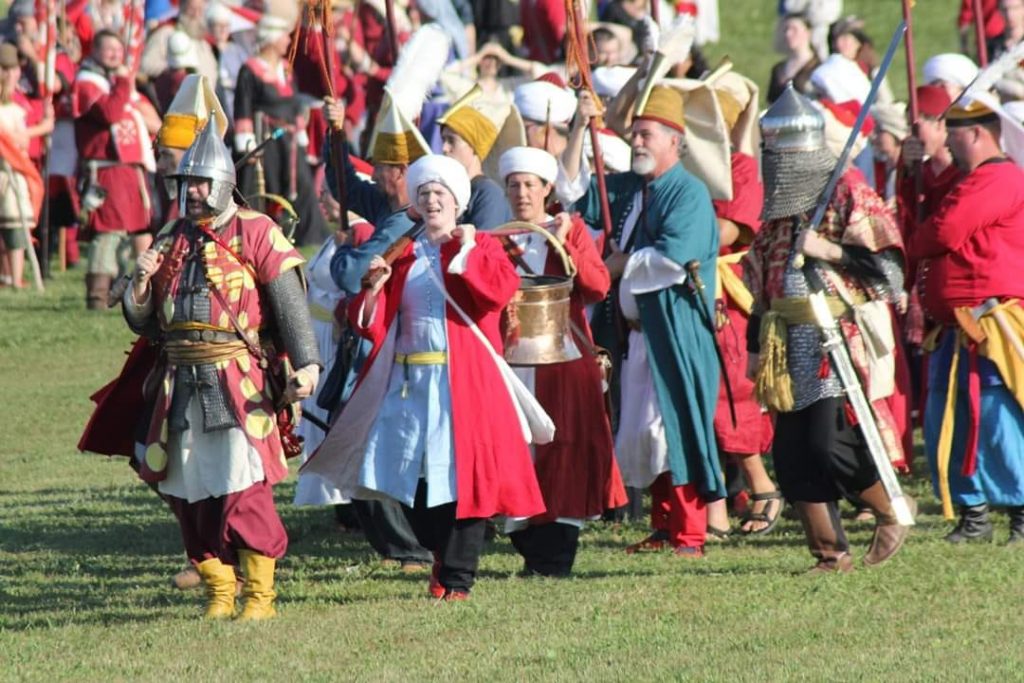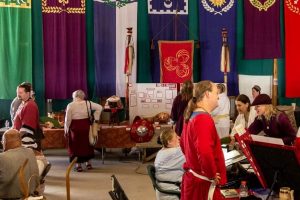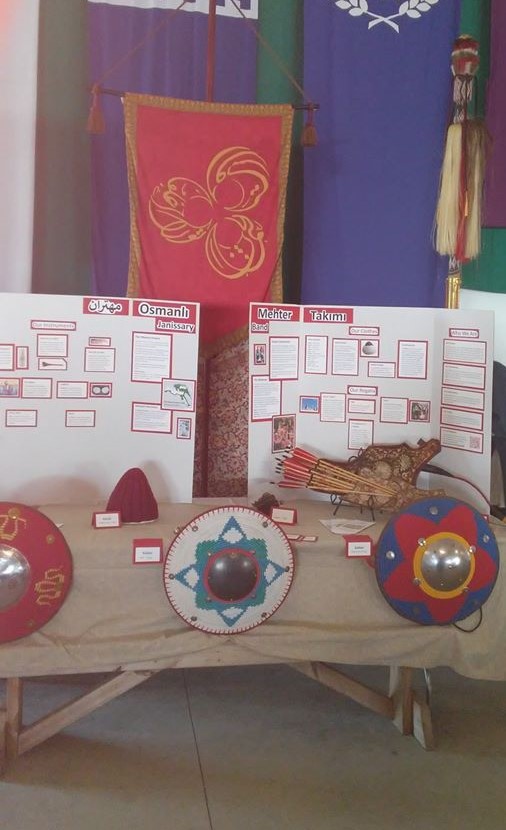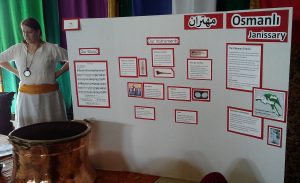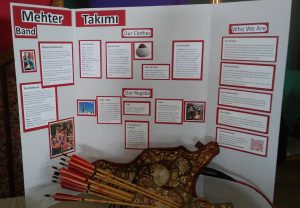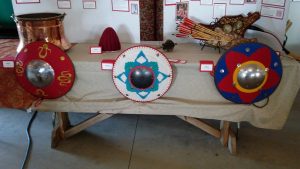This is the story of the Five Calamities of Fiffaru, the Disaster Lyre.
In 2019, my friend Mattheus Dupuy showed up to a local practice with a Germanic lyre. He let me noodle on it, and I instantly fell in love. After letting me borrow his lyre for a bit, he offered to help me build an Oberflacht lyre using instructions from Michael J. King — my first woodworking project! In a day of woodworking, we managed to get the crosspiece cut, the body shaped, and over half of the soundbox hollowed out. Unfortunately, at the end of the day, the router slipped and cut a large curve in the back before we noticed. This was the First Calamity. After talking about hollowing the whole thing out and slapping on a backpiece, we broke for the day.
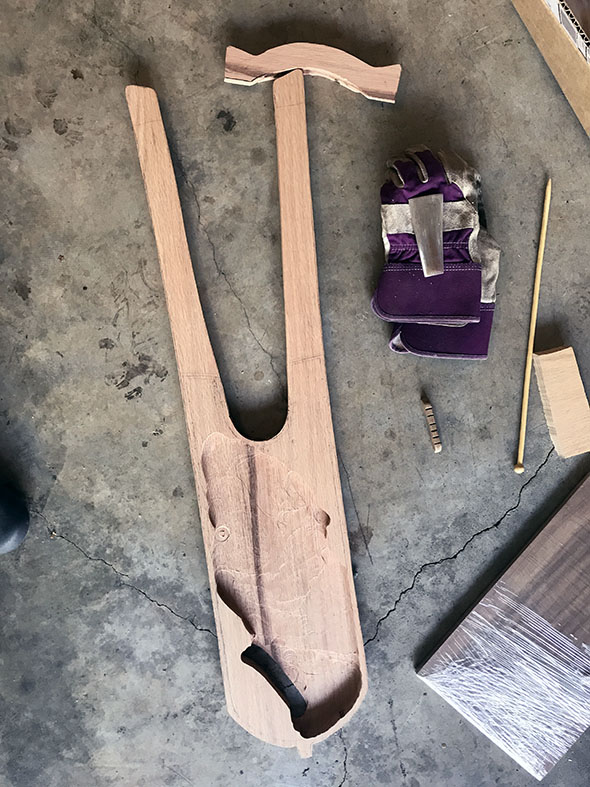
The lyre sat in my garage for nearly two years. With the plague marching the lands, I didn’t have access to the tools to finish it, and over winter I didn’t have a warm space to work on it, either. Then warm weather hit, vaccinations were imminent, and I felt the need to get this sucker done. I had an electrical drill, a coping saw, and pure stubbornness. I had neither a workbench nor wisdom. Despite this, over a weekend I managed to get the majority of the body cut out via strategic drilling and very difficult sawing. Unfortunately, as I started to hollow closer to the lyre’s arms, the lyre cracked where the two arms met. This was the Second Calamity.
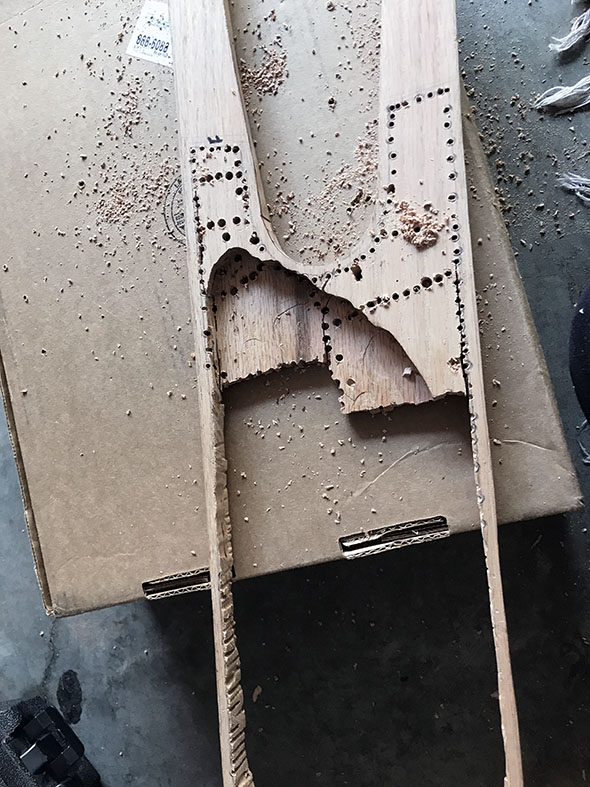
I decided to peg and glue the headpiece when this happened, to provide stability (since I didn’t have a proper dowel to peg it with, I sliced up an old bamboo knitting needle). I spent a long time trying to find the best glue for the job, but I couldn’t find any recommendations, so I settled on standard wood glue. After finishing the headpiece, I glued the break, clamped it all tightly, and left it for a week or so.
Because I had limited tools and the structure had already been compromised, I decided to simply even out the hollowing and not even attempt to make the front and back boards flush with the frame.
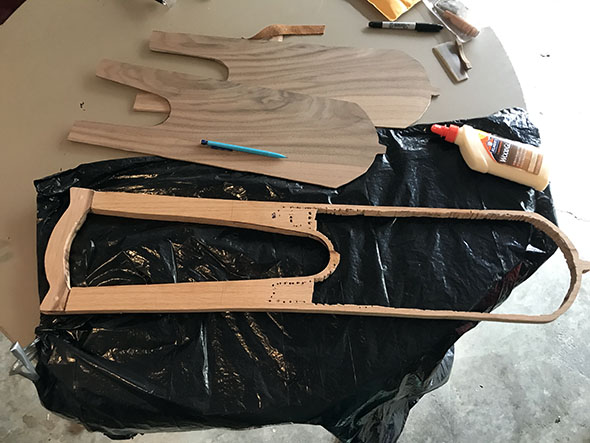
I used wood glue to attach the soundboards, pressed the whole thing with some handweights, and let it dry.
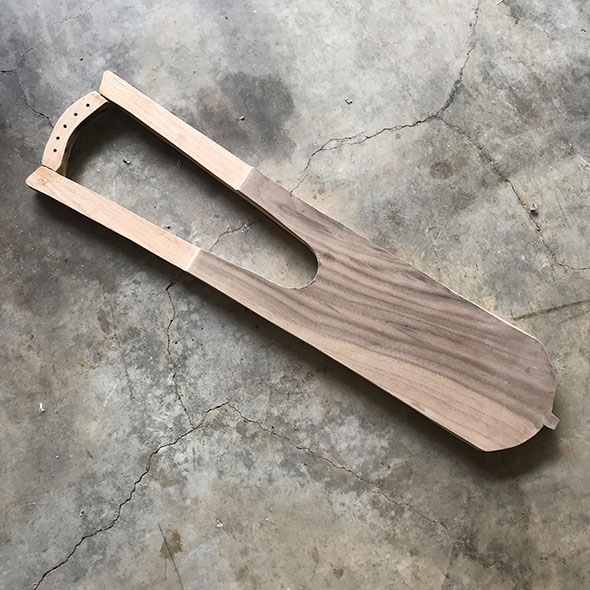
Around this time is when I discovered the Third Calamity: mismatched holes. I had planned for a six-string lyre. Mattheus gifted me a bridge of bog oak for six strings, as well as a horn tailpiece, which I drilled for six strings. But I did my math wrong, and drilled only five holes in the headpiece, with no space to cram in a sixth. Luckily, I could skip one slot on the bridge, and I was able to fit a seventh hole on the tailpiece so that the strings could still be roughly equally-spaced. Thus, the lyre became a pentatonic lyre by accident.
This was not the only issue involving the pegs. I didn’t drill the whole way through, as I didn’t want them to be visible from the back; however, I made some of the pegs too shallow, and the leftmost one in particular had trouble going in. So, I decided to deepen some of the holes — and promptly went through the back on the leftmost. I managed to not do that on the other four, but this was still the Fourth Calamity.
Before stringing, I wanted to apply a finish. However, I couldn’t find any reccomendations for a finish that were newbie-friendly and non-combustible (hi, linseed oil!), so I decided to just use a mix of mineral oil and beeswax, which I already had on hand for wooden chopping boards.
Finally, it was time for stringing! I had purchased a bunch of guitar string sets, so I chose the best selection of nylon strings from those. I was a little at a loss for how to attach the tailpiece, but other lyres I had used employed either fishing line, fake sinew, or plastic-wrapped wire. I had some of the latter available, so I strung it up, but upon tensioning the strings this snapped, being sliced through by the horn tailpiece (the Fifth Calamity). I tried a few fixes, then took some files to the holes and smoothed them out. I no longer trusted the wire, though, so I wrapped part of the tailpiece holes with silk thread and fingerloop braided a tie. It held.
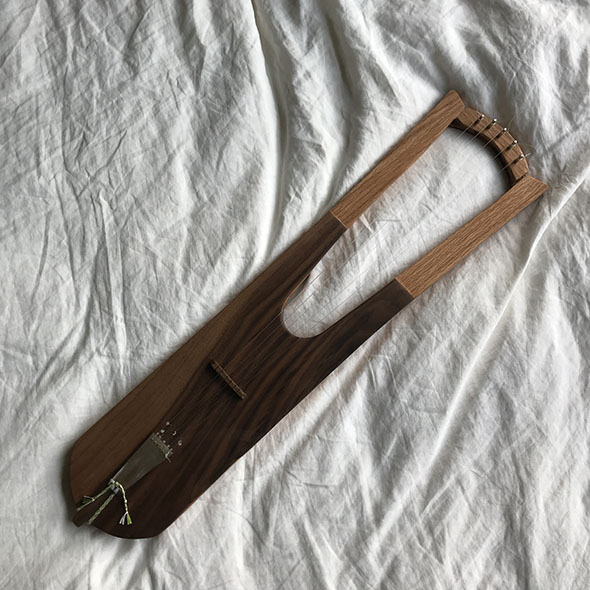
By this point, I had decided to name the lyre Fiffaru, which translates to Five Calamities (from fif and fær, which pluralizes to faru). Despite being the Disaster Lyre, it sounds pretty good! While I don’t have a performance video of this, please enjoy the first recorded noodling upon it:
Overall, I’m quite proud of Fiffaru, and its name is rather tongue-in-cheek. This was my first woodworking project, and my first instrument! At the end, I have a pretty beautiful instrument that sounds nice and will hold up well as it’s dragged to events, and because of the calamities I now have a dedicated pentatonic lyre. It’s an overall win!
Finally, in addition to the plans from Michael J. King, I found a few additional websites useful:
- http://crab.rutgers.edu/~pbutler/aslyre.html was helpful for figuring out how to glue on the boards
- https://literaryworkshop.wordpress.com/2012/11/10/building-an-anglo-saxon-lyre/ gave me a starting place for buying strings (though I would definitely purchase them singularly next time!)
- http://www.daviddfriedman.com/Medieval/Articles/lyre/To%20Make%20a%20Lyre.htm had some good information on construction and finishing, and while I didn’t use any of this information in my construction I was glad I reviewed it
